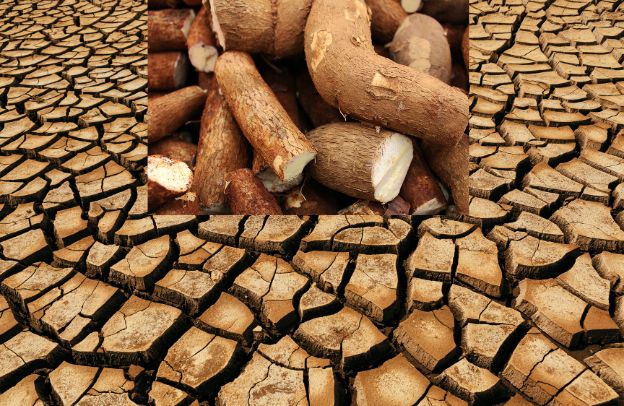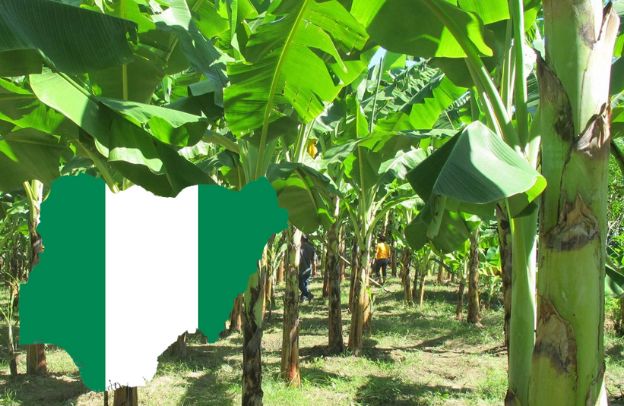How To Make Gluten-Free Maize Flour At Home

Discover how maize can be transformed into a variety of personal care products designed to enhance or alter one’s physical appearance. From skincare and haircare to makeup and personal hygiene items, the possibilities are endless. Keep reading to learn more about the exciting world of corn-based cosmetics!
Join AClasses Media today and learn how to turn Africa’s agricultural potential into your entrepreneurial success story
Maize stands as a cornerstone of African agriculture, with Nigeria leading the charge. In 2021, Nigeria’s maize production reached approximately 12.75 million metric tons, marking a significant increase from previous years. This growth underscores maize’s pivotal role in the nation’s economy and food security.
Beyond Nigeria, countries like South Africa, Egypt, and Ethiopia contribute substantially to Africa’s maize output.
Collectively, the continent produced about 91 million metric tons of maize by 2020, reflecting an annual increase of 2.2 million metric tons since 2010. This upward trend highlights maize’s integral role in African agriculture and its potential for meeting both local and global demands.
According to FAO, The latest forecast for global cereal production in 2024 has been revised downward from the previous month and now stands at 2841 million tonnes.
At this level, the world cereal output is 0.6 percent lower year on year but remains the second largest on record. The reduction this month primarily reflects downward revisions to maize and wheat production forecasts.
Global maize production, according to the FAO, is estimated at 1,217 million tonnes, representing approximately 80 percent of total coarse grain output. This figure is slightly lower than the previous month’s forecast and 1.9 percent below the level recorded in 2023. The downward revision reflects weaker-than-anticipated yields in both the European Union and the United States. Likewise, the global wheat production forecast for 2024 has been slightly adjusted to 789 million tonnes, now aligning with the production levels seen in 2023.
The bulk of the month-on-month decrease is linked to a lower wheat estimate in the European Union, where overly wet conditions curbed yields in parts. As for rice, FAO’s forecast of world rice production in 2024/25 has changed little since November. Thus, it continues to point to area expansion resulting in a 0.8 percent annual increase in global rice output to a record high of 538.8 million tonnes (milled basis).
Turning to the 2025 crops, planting of the winter wheat crop is underway across the northern hemisphere, and softer prices in 2024 may dissuade area expansions.
In the United States of America, sowing of the winter wheat crop is progressing at an average pace, and, owing to recent beneficial rainfall, 55 percent of winter crops are rated as good to excellent at the end of November, 5 percentage points higher than last year.
In the European Union, sowing operations were delayed due to a wet start of the autumn period in western areas, particularly in southern Spain.
While dry conditions in November accelerated the sowing pace, continued water deficits in eastern countries hindered early crop development in some regions.
Below-normal rainfall in key southern wheat-growing areas in the Russian Federation has led to low soil moisture levels, hampering planting operations. Less-than-favorable weather conditions also impeded sowings in Ukraine, where the war continues to be a major impediment to the agriculture sector.
In Far East Asia, remunerative prices and government support policies, coupled with favorable soil moisture conditions, are likely to see similar-sized wheat plantings in China (mainland) and India for the 2025 crop, with potential for expansions.
See also: The Secret to Growing High-Yield Maize: Expert Tips and Tricks
The Growing Demand for Gluten-Free Alternatives
The global gluten-free market is experiencing a significant surge, driven by rising health consciousness and dietary restrictions.
Projections indicate that this market will reach $14 billion by 2030, with gluten-free flours like maize flour playing a central role. For individuals with celiac disease, gluten sensitivity, or those opting for healthier lifestyles, maize flour offers a nutritious and versatile alternative to wheat-based products.
According to research gate which states that, for this purpose, quantitative research was conducted using a questionnaire completed by 107 respondents who consumed gluten-free products.
The results of the research showed that most consumers prepared their own meals, paid attention to ingredients, and strictly adhered to a gluten-free diet. About 10% of the respondents declared that they occasionally did not follow a gluten-free diet.
Respondents were generally not satisfied with the price and availability of gluten-free products on the market.
An additional aggravating circumstance for them when eating out was that restaurants generally do not have a sufficient selection of gluten-free dishes in their daily offer. Although most of them stated that they buy basic, well-known gluten-free products, they want to try new products with different, new flavors.
Step-by-Step Guide: Crafting Gluten-Free Maize Flour at Home
Embarking on the production of gluten-free maize flour is both straightforward and rewarding. Here’s how you can create high-quality flour:
- Selecting Quality Maize: Opt for non-GMO, pesticide-free maize to ensure purity. Collaborate with organic maize farmers or cooperatives to source the best kernels.
- Cleaning the Kernels: Rinse the maize thoroughly to eliminate dust and impurities.
- Drying the Kernels: Employ sun-drying methods or a low-heat oven to remove moisture completely, preventing spoilage.
- Grinding the Kernels: Utilize a blender or traditional stone grinder to achieve a fine powder consistency.
- Sifting and Storing the Flour: Sift the ground maize to ensure the uniform texture and store it in airtight containers placed in a cool, dry environment.
The Multifaceted Uses of Gluten-Free Maize Flour
Gluten-free maize flour is a versatile ingredient that plays a key role in a wide range of culinary creations. From baked goods like cakes, cookies, and bread to gluten-free tortillas, this flour is a reliable substitute in countless recipes. It also serves as an effective thickening agent for soups, gravies, and sauces, and works wonderfully as a coating for fried or baked meats and vegetables.
See also Cassava Flour: A Gluten-Free Alternative for Baking and Cooking
Beyond savory dishes, maize flour is essential in snacks like popcorn, corn chips, and tortilla chips, and even plays a part in brewing gluten-free beer, catering to a growing niche market. Its adaptability makes it a must-have in gluten-free kitchens.
- Baked Goods: Ideal for cakes, cookies, bread, and pasta, serving as a gluten-free substitute in numerous recipes.
- Tortillas: Essential for crafting gluten-free tortillas, a staple in many cuisines.
- Thickening Agent: Effective in enhancing the consistency of soups, gravies, and sauces.
- Coating: Suitable for breading meats, fish, and vegetables intended for frying or baking.
- Snack: Fundamental in producing popcorn, corn chips, and tortilla chips.
- Beverages: Utilized in the brewing of gluten-free beer, catering to a niche market.
See also: Feeding Africa: The Power of Maize-Based Livestock Feed in Agribusiness
The Business Potential for Diaspora Entrepreneurs
The African diaspora, comprising over 30 million individuals, holds significant potential for driving development through investment and knowledge transfer. Engaging in agribusiness ventures like maize flour production can yield substantial economic benefits.
- Global Gluten-Free Market: With increasing demand in Europe, North America, and Asia, there lies a lucrative opportunity for African-sourced maize flour to penetrate these markets.
- Value Addition and Branding: Entrepreneurs can develop branded gluten-free products, capitalizing on authenticity and quality to differentiate themselves in the market.
- Collaborative Farming Models: Partnering with local farmers ensures sustainable sourcing, enhances product quality, and fosters job creation within rural communities.
- Export Opportunities: Leveraging trade agreements, such as the African Continental Free Trade Area (AfCFTA), can facilitate access to new markets and expand business reach.
Challenges and Strategic Solutions
While the prospects are promising, certain challenges may arise:
Inconsistent Maize Quality: Address this by providing training to farmers and investing in agricultural technologies that enhance yield and quality.
Limited Access to Processing Infrastructure: Overcome this by collaborating with agro-processing hubs or establishing small-scale facilities equipped with necessary machinery.
Market Competition: Stand out by emphasizing product authenticity, superior quality, and compelling brand narratives that resonate with consumers.
The Importance of Gluten-Free Maize Flour in Food Security
Maize flour is rich in carbohydrates, dietary fiber, and essential vitamins and minerals, contributing to balanced nutrition. The traditional process of nixtamalization further enhances its digestibility and nutritional profile.
Economically, promoting maize flour production stimulates local economies, creates employment opportunities, and reduces post-harvest losses. By focusing on maize, a readily available staple, reliance on imported wheat diminishes, bolstering food security and self-sufficiency.
See also: Ultimate Guide to Harvesting and Storing Maize: A Path to Agribusiness Success
Conclusion: Transforming Challenges into Opportunities
Africa’s agricultural landscape is ripe with opportunities for diaspora entrepreneurs eager to make a meaningful impact. By mastering the production of gluten-free maize flour, you can contribute to economic development, address food security challenges, and meet the growing global demand for gluten-free products.
Whether starting on a small scale or aiming for large-scale production, this venture bridges continents and fosters sustainable growth. Embrace the potential within Africa’s golden crop and embark on a journey that promises both profit and purpose.
Join AClasses Media today and learn how to turn Africa’s agricultural potential into your entrepreneurial success story





